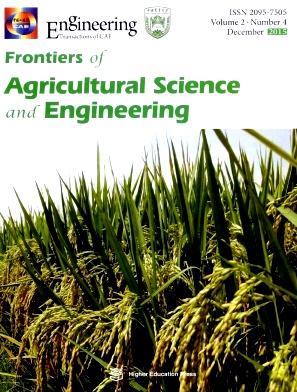SUSTAINABLE DEVELOPMENT OF CROP-LIVESTOCK FARMS IN AFRICA
IF 2.8
4区 农林科学
Q1 AGRONOMY
引用次数: 7
Abstract
Crop-livestock farms across Africa are highly variable due to in agroecological and socioeconomic factors, the latter shaping the demand and supply of livestock products. Crop-livestock farms in Africa in the 21st century are very different from most mixed farms elsewhere in the world. African crop-livestock farms are smaller in size, have fewer livestock, lower productivity and less dependency on imported feed than farms in most countries of Europe, the Americas and the intensive agricultural systems of Asia. This paper discusses the role African crop-livestock farms have in the broader socio-agricultural economy, and how these are likely to change adapting to pressures brought on by the intensification of food systems. This intensification implies increasing land productivity (more food per hectare), often leading to more livestock heads per farm, producing fertilized feeds in croplands and importing feed supplements from the market. This discussion includes (1) the links between crop yields, soil fertility and crop-livestock integration, (2) the increasing demand for livestock products and the land resources required to meet to this demand, and (3) the opportunities to integrate broader societal goals into the development of crop-livestock farms. There is ample room for development of crop-livestock farms in Africa, and keeping integration as part of the development will help prevent many of the mistakes and environmental problems related to the intensification of livestock production observed elsewhere in the world. This development can integrate biodiversity, climate change adaptation and mitigation to the current goals of increasing productivity and food security. The inclusion of broader goals could help farmers access the level of finance required to implement changes.非洲小规模畜牧场的可持续发展
由于农业生态和社会经济因素,非洲各地的作物畜牧场变化很大,后者决定了畜牧产品的需求和供应。21世纪非洲的作物畜牧场与世界其他地方的大多数混合农场大不相同。与欧洲、美洲大多数国家和亚洲集约农业系统的农场相比,非洲作物畜牧场规模较小,牲畜数量较少,生产力较低,对进口饲料的依赖性较低。本文讨论了非洲作物畜牧场在更广泛的社会农业经济中的作用,以及这些作用可能如何改变,以适应粮食系统集约化带来的压力。这种集约化意味着提高土地生产力(每公顷粮食更多),通常导致每个农场有更多的牲畜头,在农田中生产受精饲料,并从市场进口饲料补充剂。这一讨论包括(1)作物产量、土壤肥力和作物-牲畜一体化之间的联系,(2)对牲畜产品的需求不断增加,以及满足这一需求所需的土地资源,以及(3)将更广泛的社会目标纳入作物-牲畜养殖场发展的机会。非洲的作物畜牧场有着充足的发展空间,将一体化作为发展的一部分将有助于防止世界其他地方出现的与畜牧生产集约化有关的许多错误和环境问题。这一发展可以将生物多样性、气候变化适应和缓解与提高生产力和粮食安全的当前目标相结合。纳入更广泛的目标可以帮助农民获得实施变革所需的资金水平。
本文章由计算机程序翻译,如有差异,请以英文原文为准。
求助全文
约1分钟内获得全文
求助全文
来源期刊
CiteScore
5.10
自引率
2.70%
发文量
33
期刊介绍:
Frontiers of Agricultural Science and Engineering (FASE) is an international journal for research on agricultural science and engineering. The journal’s aim is to report advanced and innovative scientific proceedings in agricultural field including Crop Science, Agricultural Biotechnology, Horticulture, Plant Protection, Agricultural Engineering, Forestry Engineering, Agricultural Resources, Animal Husbandry and Veterinary Medicine, Applied Ecology, Forestry and Fisheries. FASE is committed to provide a high level scientific and professional forum for researchers worldwide to publish their original findings and to utilize these novel findings to benefit the society.

 求助内容:
求助内容: 应助结果提醒方式:
应助结果提醒方式:


